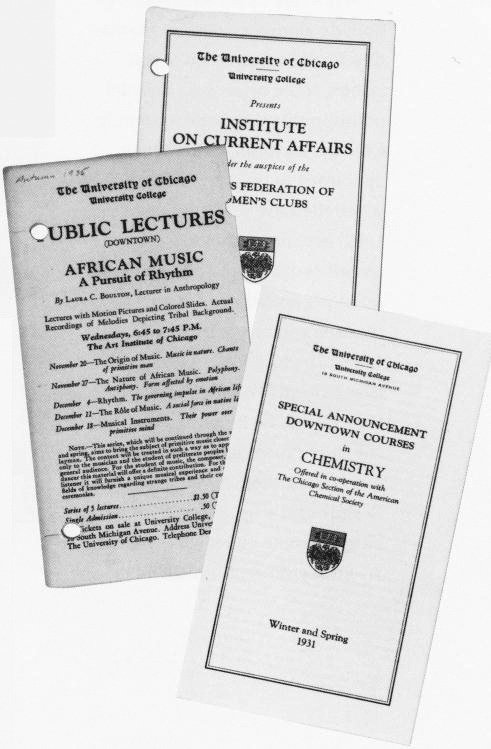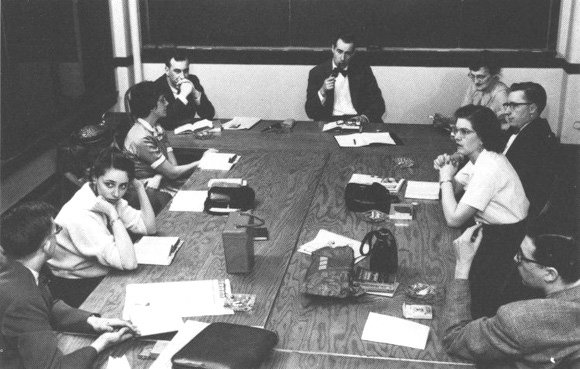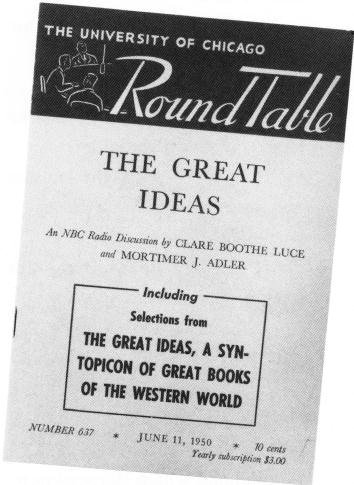Extension and Great Books

The University's extension program offered a wide variety of courses and lectures, both downtown and on campus, often in cooperation with other Chicago institutions and organizations.
Harper had several models for his extension program. The correspondence-study component of the extension was derived from Harper's own entrepreneurial experience as the founder and promoter of a surprisingly successful Hebrew correspondence school. The inspiration for lecture-study and class-study extension programs came in part from American educational and religious institutions offering similar fare, including the famous summer sessions of Chautauqua which Harper knew personally. It was also shaped by the lecture courses offered through the extension programs at English universities. The British public had attended them so enthusiastically that some of the lecturers were minor celebrities. As the administrator and first lecturer for Chicago's program, Harper recruited Richard Green Moulton, Cambridge's most popular extension lecturer. Moulton, who lectured at the University's downtown extension center until 1919, routinely filled the 275-seat auditorium with his addresses on English literature.
Over the years, the University Extension offered both courses for credit and nondegree classes. Correspondence courses were ended in the mid-1960s, but lecture and seminar programs continued. In recent years, the Extension Division, renamed and redefined as the Office of Continuing Education, continues to offer an appealing array of adult education programs. Enthusiastic response to the University's first half-century of extension courses prepared the way for one of Chicago's best known ventures in continuing education, the Great Books program. In 1943, Wilbur Munnecke, then vice-president of Marshall Field and Company, complained to President Robert M. Hutchins that too many bright businessmen had difficulty communicating. Munnecke thought that a great books discussion group, like the one Hutchins had conducted on campus with Mortimer Adler, would help overcome the problem. The result of this idea was a gathering of top Chicago executives, informally known as the "Fat Men," who met regularly to read and discuss the classic works of the Western tradition. The success of the group was so immediate that the experiment was taken to the Chicago Public Library, where librarians were trained to lead discussions.
Within three years, a citywide Great Books program had been established in Chicago and a number of other cities. A manual for discussion leaders was prepared so that even participants untrained in scholarly criticism could lead lively, informed discussions. In 1946, Hutchins, who had made frequent personal and radio appearances on behalf of the program, established the independent Great Books Foundation with a $132,000 loan from the University.
Great Books continued to grow and thrive. In Chicago, the first major city to embrace the program, public schools have offered Great Books for twenty-five years in over 250 local schools. Today 30,000 adults take part in discussion groups, and nearly one million children are introduced to at least some of its content through public schools and libraries. For its part, the University offers the Basic Program of Liberal Education, a series of continuing education courses centered on reading the classic texts of the Western tradition.


